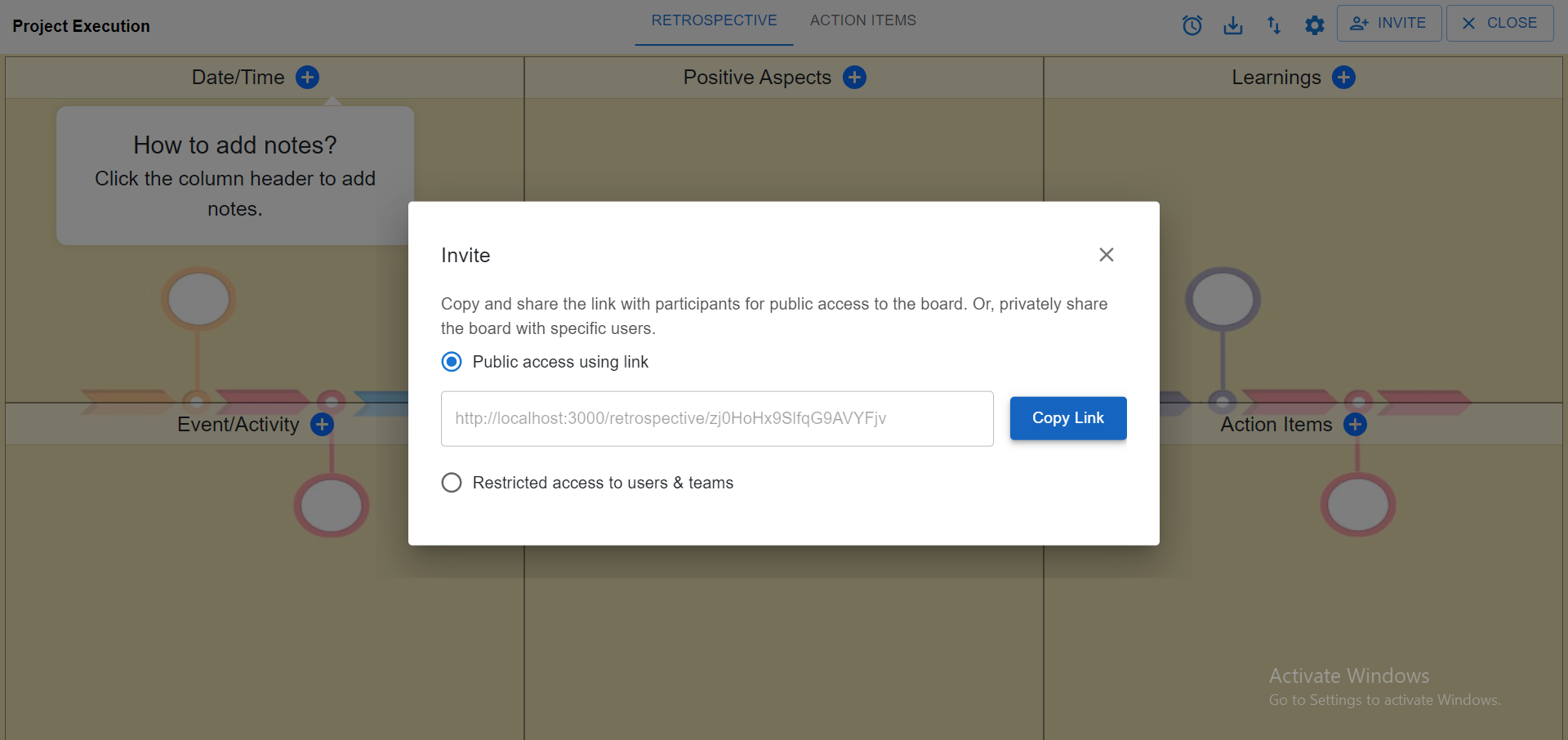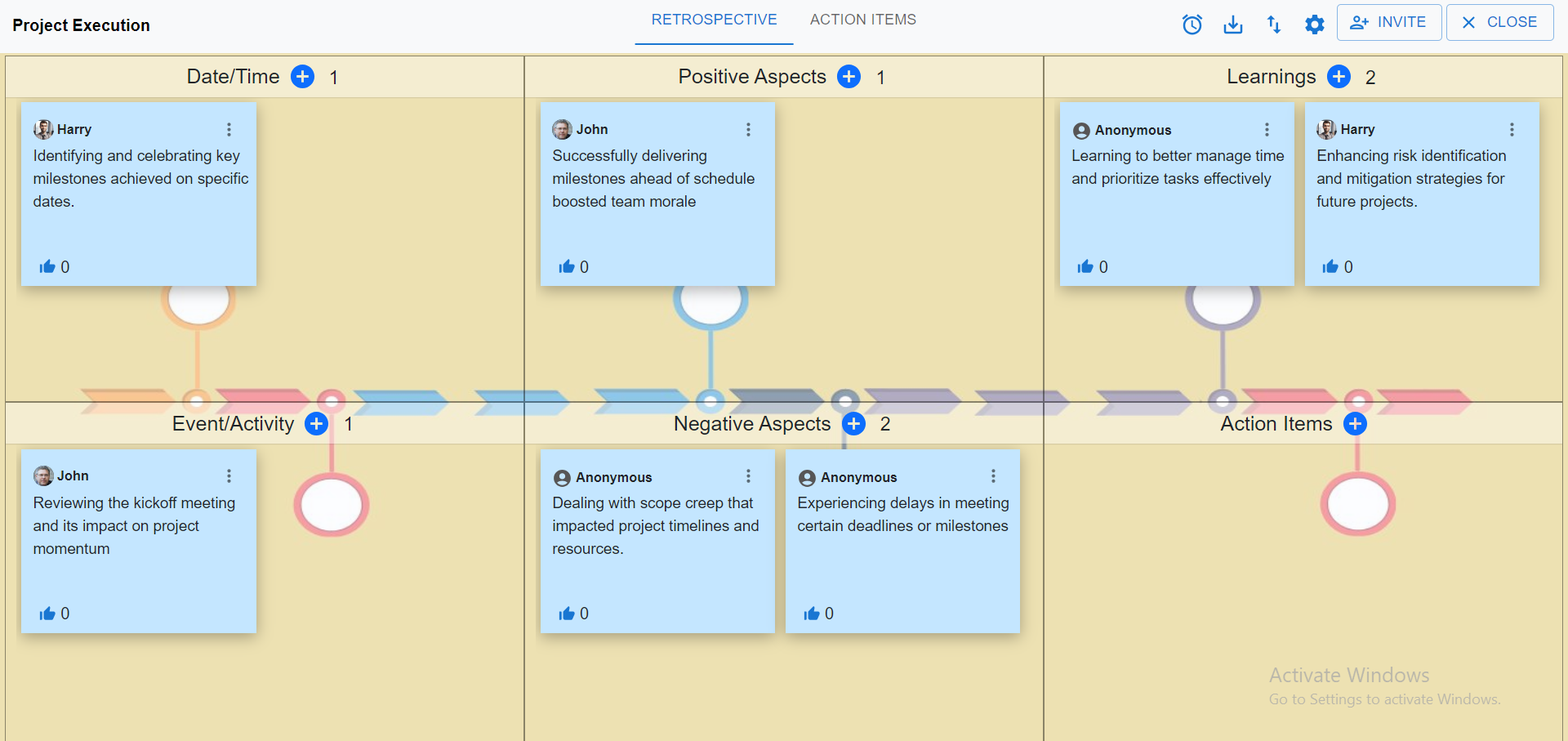Timeline Retrospective
A Timeline Retrospective is a team meeting to review and reflect on the sequence of events over a project period, identifying key moments and deriving actionable insights.

What is a Timeline Retrospective?
A Timeline Retrospective is an agile technique that helps teams reflect on their experiences over a specific period by creating a visual timeline of events. Team members document significant events, milestones, challenges, and emotions on sticky notes and place them in chronological order on a timeline. This visual representation allows the team to identify patterns, understand the sequence of activities, and recognize cause-and-effect relationships. Through discussion, the team analyzes these events, categorizing them into positive and negative experiences, and identifies lessons learned and actionable items to improve future processes
How to Conduct a Timeline Retrospective?
Conducting a Timeline Retrospective involves several structured steps to help a team reflect on their past experiences over a specific period, identify patterns, and extract actionable insights for future improvements. Here's how to conduct a Timeline Retrospective:
- Preparation: Select the period to review, such as a sprint, project phase, or release cycle. Prepare a timeline on a whiteboard, large paper, or a virtual board if working remotely.li>
- Creating the Timeline: Ask team members to write down significant events, achievements, challenges, and emotions they experienced during the selected period on sticky notes or virtual notes. Ensure that each note includes a brief description and date or time of the event. Place these notes on the timeline in chronological order.
- Facilitating the Discussion: Review the timeline collectively with the team. Discuss each event, focusing on understanding the context and impact. Use open-ended questions to encourage detailed discussions, such as "What led to this event?" or "How did this affect our progress?"
- Identifying Patterns and Insights: Look for patterns, trends, and recurring issues on the timeline. Categorize events into positive (what went well) and negative (what didn’t go well) experiences. Discuss root causes of problems and the factors that contributed to successes.
- Generating Action Items:Based on the insights from the discussion, identify actionable items to improve future processes. Prioritize these actions and assign them to team members for follow-up. Document the lessons learned and the action items to ensure accountability and track progress in future retrospectives.
- Closing the RetrospectiveSummarize the key takeaways and action items. Thank the team for their participation and insights. Plan a follow-up to review the implementation of the action items in the next retrospective.
Columns in Timeline Retrospective
A 4Ls Retrospective is a simple yet effective method for teams to reflect on their work and processes. It stands for:
- Date/Time: This column marks when specific events or activities occurred. It helps in creating a chronological sequence of occurrences throughout the project or sprint.
- Event/Activity: This column describes the specific events or activities that took place. It provides context for the timeline and helps identify key moments or milestones.
- Positive Aspects: Here, team members note what went well during the event or activity. It highlights successes, effective practices, and positive outcomes.
- Negative Aspects: This column captures what did not go well or what challenges were faced during the event or activity. It helps in identifying pain points, obstacles, or failures.
- Learnings This column is for the insights and lessons learned from the events or activities. It focuses on what the team can take away to improve future performance.
When to Conduct a Timeline Retrospective?
A Timeline Retrospective is particularly useful in specific situations to provide a comprehensive review of a project's progress and events. Here are the optimal times to conduct one:
- End of a Project: After completing a significant project, to review the entire lifecycle from start to finish and understand the key events, successes, and challenges.
- After a Major Milestone: Upon reaching a major milestone within a project, to assess what has been achieved so far and what can be improved moving forward.
- Post-Mortem Analysis: Following the conclusion of a project that faced significant challenges or failures, to conduct a thorough analysis of what went wrong and identify root causes.
- Periodic Reviews: At regular intervals, such as quarterly or after several sprints, to continuously monitor progress and adapt strategies based on accumulated experiences and insights.
- End of a Release Cycle: After releasing a major version or update of a product, to review the development and deployment processes and gather feedback for future releases.
How can you conduct a Timeline retrospective with Agilebin?
Effortlessly conduct a Timeline retrospective with Agilebin's ready-to-use template!
Why Agilebin's template? Because it provides a realistic and immersive experience, making your Timeline retrospective feel authentic and meaningful. With Agilebin's ready-to-use template, you'll feel like you're navigating through the actual process, allowing for a more effective and insightful retrospective session.
Choose Timeline retrospective template in Agilebin
Choose the Timeline Retrospective template from Agilebin's collection of retrospective templates. This template is specifically designed to facilitate the Timeline Retrospective process, providing a structured framework for your team's reflection and improvement discussions
Invite team members to participate in the retrospective session
Invite team members to participate in the retrospective session by adding their email addresses or sharing the session link directly with them. You can choose between public access using a link, allowing anyone with the link to join, or restricted access, limiting participation to specific users or teams.

Facilitate Discussion with Sticky Notes
Agilebin offers pre-defined columns for the Timeline Retrospective, including "Date/Time," "Event/Activity," "Positive Aspects," "Negative Aspects," "Learnings," and "Action Items." Participants can add sticky notes to each column during the retrospective session, sharing their feedback, observations, and suggestions.
